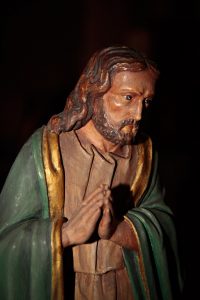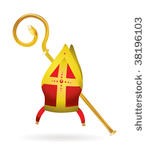On several occasions, we have examined aspects of the ancient city of Philippi in northern Greece.  We have noted its connection with St. Paul, including archaeological evidence for women’s involvement in pagan cults and Roman religion as the early Jesus movement was growing, and we noted how women may have carved the unique rock reliefs of the goddess Artemis on Philippi’s acropolis hill.
We have noted its connection with St. Paul, including archaeological evidence for women’s involvement in pagan cults and Roman religion as the early Jesus movement was growing, and we noted how women may have carved the unique rock reliefs of the goddess Artemis on Philippi’s acropolis hill.
We briefly mentioned the two women, Euodia (or Evodia) and Syntyche, who appear in Paul’s letter to the Philippians. Here we will expand on these two and also consider several other women associated with Philippi, both in the New (Christian) Testament of the Bible and in related early church literature: women at the place of prayer (Acts of the Apostles 16:13); Lydia of Thyatira (Acts 16:14-15, 40); and (unnamed) women addressed by Bishop Polycarp of Smyrna in Asia Minor.
![]() Even if one or more of the women in these texts are fictitious, they still provide evidence for women in the early Jesus movement. Since the portrayal of women in what later became Christianity has been so influential for the status of women in the West, new perspectives can not only be informative but also potentially liberating.
Even if one or more of the women in these texts are fictitious, they still provide evidence for women in the early Jesus movement. Since the portrayal of women in what later became Christianity has been so influential for the status of women in the West, new perspectives can not only be informative but also potentially liberating.
Euodia and Syntyche
Chronologically, the earliest mention of women at Philippi in the surviving literature is St. Paul’s reference to Euodia and Syntyche in Phil 4:2-3, written around 50-60 CE (Common Era). The passage reads (NRSV): “I urge Euodia and I urge Syntyche to be of the same mind in the Lord. Yes, and I ask you also, my loyal companion, help these women, for they have struggled beside me in the work of the gospel, together with Clement and the rest of my co-workers, whose names are in the book of life.”
A short passage, it has often been virtually skipped over by most (male) commentators on Philippians through the years. Those that have commented have argued in a rather sexist manner that Euodia and Syntyche were two women having a disagreement between themselves that negatively impacted Paul’s mission. However, Harvard scholar Elisabeth Schüssler Fiorenza (170), among others, sees Euodia and Syntyche as active in the Jesus group and strong leaders: they “labored side by side with [Paul] in the Gospel.”
Scholar Mary Rose D’Angelo further maintains that one or both women founded the Jesus community at Philippi. Taking this an important step further, D’Angelo raised the intriguing possibility that they may also have been a same-sex committed couple on a “lesbian continuum:” “Evodia and Syntyche can be seen as a missionary couple, partners in the mission, rather than as individual members of Paul’s missionary team. They may in fact have been independent of Paul. . . .The ‘religious conflict’ [implied in Phil 4:2] is a dispute not between Evodia and Syntyche but between Paul on the one hand and the two women missionaries on the other” (D’Angelo, “Women Partners,” 76; and “Euodia,” 79).
Elsewhere we have discussed the possibility that other couples in the early Jesus movement (including the Christian Testament) may also be missionary couples – both male-female and same-sex.
Philippian Women in Acts of the Apostles
The next literary references to women at Philippi come from Acts of the Apostles in the Christian Testament. One reference is to an anonymous gathering of women who prayed near a river outside the city gate (16:13), and the other reference is to a woman named Lydia (16:14-15, 40).
Before we examine these women, we will briefly review Acts of the Apostles. Most likely a work by the ancient writer Luke, one of Jesus’ followers, Acts is a story of the early years of the Jesus movement told for specific theological reasons. It circulated around 115 CE (Pervo, 346), long after the death of Jesus and his disciples. Mainstream religion scholars generally do not trust the factual accuracy of Acts, so it is important to be somewhat skeptical that Luke’s portrayal of Philippi in the 50s CE (Paul’s time) is historically accurate.
Luke wrote Acts within at least two social and theological contexts: the imperial era of his own time when the Jesus movement had broken away from Judaism, and the Philippi of the mid-first century. Luke and his readers may have known about Paul’s letter to the Philippians and basic information about the Jesus group in that city, such as female leaders like Euodia and Syntyche. Also, details in Luke’s Philippi narrative include a river, a creek and a city gate that were present in the city (although many other cities had these features, too).
Women at prayer. Acts 16:13 reads (NRSV): “On the sabbath day we went outside the gate by the river, where we supposed there was a place of prayer; and we sat down and spoke to the women who had gathered there.” This description recalls another aspect of Acts that might ring true, given the implication that these women were Jews or at least “God-fearers.” Recent archaeological finds have uncovered evidence for the existence of a Jewish community at Philippi in the third century CE (Koukouli-Chrysantaki, 28-35). A marble stele, found on the grave of a Jew in Philippi’s west cemetery and now housed in the Philippi Museum, mentions a synagogue. While this artifact, along with evidence from elsewhere in Macedonia, is later than both the time of Paul and the writing of Acts, it does offer some support to Luke’s allusion to Jewish women at Philippi.
 However, we still need to regard this snippet as a possible invention of Luke’s for a certain purpose. The early Jesus movement in both Paul’s and Luke’s times was surrounded not only by a wide array of pagan deities and the emperor cult but also many different “brands” of groups that followed Jesus. By the early second century when Luke was writing, many different “gospels” telling a variety of stories about Jesus were in circulation; some of the groups were led by women. In mentioning these presumably Jewish women in Acts, Luke painted a picture of semi-imaginary women who, while independent in some ways, were drawn to the “right” brand of the movement (in Luke’s eyes) – one that was non-threatening to the wider society. One of Luke’s main purposes in Acts was to present the Philippian women who converted to this version as religious, upstanding, responsible, and non-radical. Unlike some of the women known to the real Paul, as reflected in his epistle to the Romans (chapter 16), they do not preach, baptize, evangelize or administer the sacraments; rather, they provide financial resources to the movement and fade safely into the background (Abrahamsen, “Place of Prayer,” 463-64).
However, we still need to regard this snippet as a possible invention of Luke’s for a certain purpose. The early Jesus movement in both Paul’s and Luke’s times was surrounded not only by a wide array of pagan deities and the emperor cult but also many different “brands” of groups that followed Jesus. By the early second century when Luke was writing, many different “gospels” telling a variety of stories about Jesus were in circulation; some of the groups were led by women. In mentioning these presumably Jewish women in Acts, Luke painted a picture of semi-imaginary women who, while independent in some ways, were drawn to the “right” brand of the movement (in Luke’s eyes) – one that was non-threatening to the wider society. One of Luke’s main purposes in Acts was to present the Philippian women who converted to this version as religious, upstanding, responsible, and non-radical. Unlike some of the women known to the real Paul, as reflected in his epistle to the Romans (chapter 16), they do not preach, baptize, evangelize or administer the sacraments; rather, they provide financial resources to the movement and fade safely into the background (Abrahamsen, “Place of Prayer,” 463-64).
Lydia. Acts 16:14-15 and 40 are the only mentions of the woman Lydia in the Bible (NRSV):
14. A certain woman named Lydia, a worshiper of God, was listening to us; she was from the city of Thyatira and a dealer in purple cloth. The Lord opened her heart to listen eagerly to what was said by Paul.
15. When she and her household were baptized, she urged us, saying, “If you have judged me to be faithful to the Lord, come and stay at my home.” And she prevailed upon us.
40. After leaving the prison they went to Lydia’s home; and when they had seen and encouraged the brothers and sisters there, they departed.
Given the stage that Luke has set in verse 13, we can now acknowledge the probability that Lydia in these verses was also a creation of Luke’s imagination and served much the same purpose as the women at prayer. However, there are a number of useful observations that scholars have been able to make not only about Luke’s motives but also about women in the early Jesus groups.
As a seller of purple goods, Lydia is said to come from Thyatira, a colony in Asia Minor known for its excellent dye industry. The Greek term for purple, porphuropolis, indicates that Lydia dealt in a very precious commodity: purple dye, which was used primarily for the clothing of royalty and the wealthy (Abrahamsen, “Lydia,” 111).
The fact that Lydia was baptized with her household (v. 15) suggests that she, like many other women in antiquity, employed a number of servants or owned slaves. After their baptism, she invited the story’s narrators (ostensibly Paul and his companions) back to her house, and she offered her home as a center for Paul and the others (O’Day, 310). No husband is mentioned, which implies that she was widowed (Unger, 1093); demographically, this was more likely than her being divorced or single, although those possibilities cannot be ruled out. The fact that she was “from Thyatira” yet apparently owned a house at Philippi suggests either that her original home was Thyatira and she no longer lived there or that her business travels took her regularly to both places. Lydia may have been a freedwoman and therefore not necessarily wealthy or high-born (Schüssler Fiorenza, 178).
On the surface, Lydia can be viewed as a prime example of a strong, well-off and independent woman merchant who converted to the Jesus movement; according to legend, she was the first European to be baptized. Gail O’Day, in the Women’s Bible Commentary (310), points out, though, that Luke does not credit Lydia with any leadership role, especially over men, in the Jesus community at Philippi. Her role, in Luke’s treatment, is to provide housing and some economic resources. This ambivalence in Acts about a woman’s role reflects the situation we noted above: women in the Jesus movement, from this perspective, should support the male leaders with their hospitality and financial resources, not rule over them.
Bishop Polycarp
 A look at the letter to the Philippian Christians from Polycarp, Bishop of Smyrna in Asia Minor, shows that the circumscribing of women’s roles in Acts is also reflected by a contemporaneous “church father.” Polycarp’s letter was written around 110 CE, close to the date of Acts. In it, this bishop admonished wives, widows and virgins to behave in a traditional manner and commended young men to cut themselves off from lustful things, presumably approving some form of celibacy. These recipients of Polycarp’s letter, along with deacons and presbyters (no mention is ever made of a local bishop), were exhorted by Polycarp to live blameless lives, refrain from “false brethren” (probably members of the Jesus movement who adhered to different doctrines) and live above reproach from their pagan neighbors.
A look at the letter to the Philippian Christians from Polycarp, Bishop of Smyrna in Asia Minor, shows that the circumscribing of women’s roles in Acts is also reflected by a contemporaneous “church father.” Polycarp’s letter was written around 110 CE, close to the date of Acts. In it, this bishop admonished wives, widows and virgins to behave in a traditional manner and commended young men to cut themselves off from lustful things, presumably approving some form of celibacy. These recipients of Polycarp’s letter, along with deacons and presbyters (no mention is ever made of a local bishop), were exhorted by Polycarp to live blameless lives, refrain from “false brethren” (probably members of the Jesus movement who adhered to different doctrines) and live above reproach from their pagan neighbors.
The importance of this letter is that it is one of dozens of writings of the so-called early church fathers who have had such influence not only on the church – Roman Catholic, Orthodox and Protestant – but on society as a whole. It is church leaders like Polycarp who have compelled women to be submissive and silent in both church and society (see also an examination of the so-called household codes). As leaders of the church, which became one of the most powerful institutions for all of Western civilization, these men had a particular worldview and outlook that dictated that men were to rule and women were to obey. These texts became “canonized,” with social consequences that impact us even today.
Summary
Even though mentions of women in the early Jesus movement at Philippi are minimal, we can still learn about women in antiquity from them and how women were portrayed in the early decades of the movement. From that point, we can go on to learn that women were respected by some leaders and held leadership roles, while other people in power not only curtailed that respect and limited women’s roles but also prevailed in the church and the West for millennia. Correcting the record is liberating and empowering for us today.
This post is adapted from a talk, “Lydia, Livia and Other Ladies of Philippi,” delivered by VA at the Lasell Institute for Learning in Retirement (now known as Lasell Village) in Newton, Mass., November 1998.
Resources
Abrahamsen, Valerie. “Lydia,” in Carol Meyers, Toni Craven and Ross S. Kraemer, eds., Women in Scripture: A Dictionary of Named and Unnamed Women in the Hebrew Bible, the Apocryphal/Deuterocanonical Books, and New Testament, 110-11. Grand Rapids, MI, and Cambridge, England: William B. Eerdmans Publishing Company, 2000.
Abrahamsen, Valerie. “Women at the Place of Prayer at Philippi,” in Carol Meyers, Toni Craven and Ross S. Kraemer, eds., Women in Scripture: A Dictionary of Named and Unnamed Women in the Hebrew Bible, the Apocryphal/Deuterocanonical Books, and the New Testament, 463-64. Grand Rapids, MI, and Cambridge, England: William B. Eerdmans Publishing Company, 2000.
D’Angelo, Mary Rose. “Euodia,” in Carol Meyers, Toni Craven and Ross S. Kraemer, eds., Women in Scripture: A Dictionary of Named and Unnamed Women in the Hebrew Bible, the Apocryphal/Deuterocanonical Books, and the New Testament, 79. Grand Rapids, MI, and Cambridge, England: William B. Eerdmans Publishing Company, 2000.
D’Angelo, Mary Rose. “Syntyche,” in Carol Meyers, Toni Craven and Ross S. Kraemer, eds., Women in Scripture: A Dictionary of Named and Unnamed Women in the Hebrew Bible, the Apocryphal/Deuterocanonical Books, and the New Testament, 159. Grand Rapids, MI, and Cambridge, England: William B. Eerdmans Publishing Company, 2000.
D’Angelo, Mary Rose. “Women Partners in the New Testament,” Journal of Feminist Studies in Religion 6 (1990) 65-86.
Koukouli-Chrysantaki, Chaido. “Colonia Iulia Augusta Philippensis,” in Charalambos Bakirtzis and Helmut Koester, ed. Philippi at the Time of Paul and after His Death, 5-35. Harrisburg, PA: Trinity Press International, 1998.
Oakes, Peter. “Philippi,” https://www.bibleodyssey.org/en/places/main-articles/philippi (accessed 8/22/22).
O’Day, Gail. “Acts of the Apostles,” Women’s Bible Commentary, 310. Ed. Carol A. Newsom and Sharon H. Ringe. London: SPCK, and Louisville: Westminster/John Knox Press, 1992.
Pervo, Richard I. Dating Acts: Between the Evangelists and the Apologists. Santa Rosa: Polebridge Press, 2006.
Schüssler Fiorenza, Elisabeth. In Memory of Her. New York: Crossroad Publishing Co., 1983.
Unger, Merrill F. “Lydia,” Unger’s Bible Dictionary, 1093. Chicago: Moody Press, [1957] 1971.
